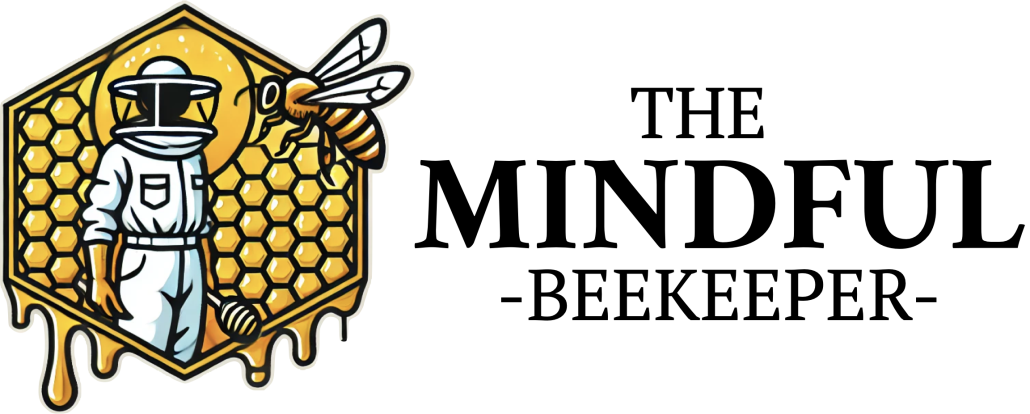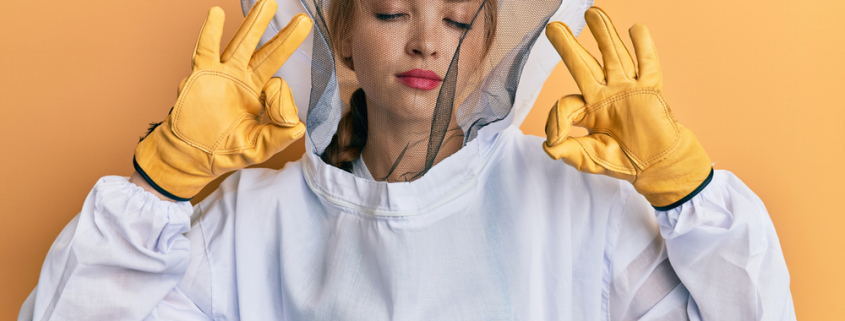Mindsight: Enhancing Beekeeping Through Emotional Awareness and Hive Harmony
In the world of beekeeping, success isn’t just about hives, honey, and protective suits—it’s also about the mind. Enter “Mindsight,” a transformative concept coined by Dr. Dan Siegel, which refers to our ability to perceive the inner workings of our own minds and those of others. While mindsight is rooted in interpersonal neurobiology and emotional intelligence, its principles can be surprisingly applicable to beekeeping. By cultivating mindsight, beekeepers can foster a deeper connection with their colonies, manage stress effectively, and promote healthier, more productive hives. In this article, we’ll explore what mindsight is and why it’s essential for modern beekeepers.
Understanding Mindsight: A Tool for Self-Awareness
Mindsight, as described by Dr. Siegel, is the focused attention that allows us to observe our thoughts, emotions, and behaviors without being overwhelmed by them. It’s the difference between saying “I am angry” (which defines you by the emotion) and “I feel angry” (which acknowledges the feeling while maintaining distance). This skill draws from neuroscience, showing that how we direct our attention can physically reshape the brain, building new neural connections throughout life.
At its core, mindsight enhances emotional and social intelligence. It helps us break free from autopilot reactions, name our emotions, and transform them. Dr. Siegel’s work through The Mindsight Institute integrates science, psychology, and even contemplative practices to teach this skill, making it accessible via books like Mindsight: The New Science of Personal Transformation and online courses.
But how does this human-centered concept translate to beekeeping? Bees may not have “minds” in the human sense, but they operate as a superorganism—a collective “hive mind” driven by instinct, pheromones, and environmental cues. Beekeepers who apply mindsight can better attune to this dynamic, turning potential challenges into opportunities for harmony.
The Role of Mindsight in Beekeeping: Staying Calm Amid the Buzz

Beekeeping demands patience, observation, and emotional regulation. Bees are highly sensitive to human behavior; they can detect stress hormones through scent and vibrations, often responding with defensive aggression. A frantic beekeeper might trigger a swarm of stings, while a composed one can work seamlessly with the colony.
This is where mindsight shines:
- Emotional Regulation for Safety and Success: Imagine approaching a hive after a stressful day. Without mindsight, you might react impulsively to a bee’s buzz, escalating tension. With mindsight, you pause, recognize “I feel anxious,” and breathe to calm yourself. This shift prevents mishandling frames or disturbing the queen, reducing risks like colony collapse or absconding.
- Observing the ‘Hive Mind’: Mindsight encourages perceiving beyond the surface. In beekeeping, this means tuning into subtle hive signals—the hum’s pitch, bee traffic at the entrance, or pheromone scents indicating health or distress. By “naming and taming” your own biases (e.g., fear of varroa mites), you observe objectively, leading to better decisions like timely treatments or splits.
- Building Resilience Against Setbacks: Beekeeping isn’t always sweet; pests, weather, or hive losses can frustrate even veterans. Mindsight helps process these emotions constructively. Instead of despairing (“I am a failure”), you reflect (“I feel disappointed, but I can learn from this”). This mindset fosters innovation, such as adopting sustainable practices informed by interpersonal neurobiology’s holistic view—treating the hive as an interconnected system, much like the human brain.
Research supports this: Neuroscience shows focused attention strengthens brain areas for empathy and problem-solving, skills vital for interpreting bee behavior. Dr. Siegel’s interdisciplinary approach in The Developing Mind (1999) echoes beekeeping’s blend of science (entomology) and art (intuition), creating a “whole elephant” view of hive dynamics.
Practical Ways to Apply Mindsight in Your Beekeeping Routine
Incorporating mindsight doesn’t require a psychology degree—it’s a learnable skill. Here are actionable steps:
- Mindful Hive Inspections: Before opening a hive, spend a minute in focused breathing. Observe your internal state: Are you rushed? Excited? Adjust accordingly to approach with clarity.
- Journaling Emotions and Observations: After each session, note not just hive metrics (e.g., brood patterns) but your feelings. This “naming” practice builds mindsight, revealing patterns like how fatigue affects your accuracy.
- Empathy for the Colony: View bees as partners, not pests. Mindsight’s social intelligence helps “perceive the mind” of the hive—anticipating needs based on seasonal cues, promoting ethical, low-stress beekeeping.
- Community and Learning: Join beekeeping groups or The Mindsight Institute’s online programs. Sharing experiences builds collective wisdom, mirroring how bees thrive through cooperation.
Studies from fields like animal behavior highlight that calm handlers improve outcomes in agriculture, including apiculture. By integrating mindsight, beekeepers report reduced stress, higher honey yields, and greater enjoyment.
Why Mindsight Matters Now More Than Ever for Beekeepers

In an era of climate change and pollinator decline, beekeeping is crucial for ecosystems. Yet, burnout is common among hobbyists and professionals. Mindsight offers a antidote, enhancing personal well-being while supporting sustainable practices. As Dr. Siegel notes, it’s about transforming our inner lives for better relationships—with ourselves, others, and even our buzzing companions.
Ready to hive deeper? Explore Dr. Siegel’s resources at The Mindsight Institute or his books for guided exercises. Whether you’re a novice or seasoned apiarist, mindsight can sweeten your beekeeping journey, one mindful moment at a time.
Sign up for Dr. Dan Siegel’s monthly updates for insights on mindsight, neurobiology, and its unexpected applications—like in beekeeping!





Leave a Reply
Want to join the discussion?Feel free to contribute!